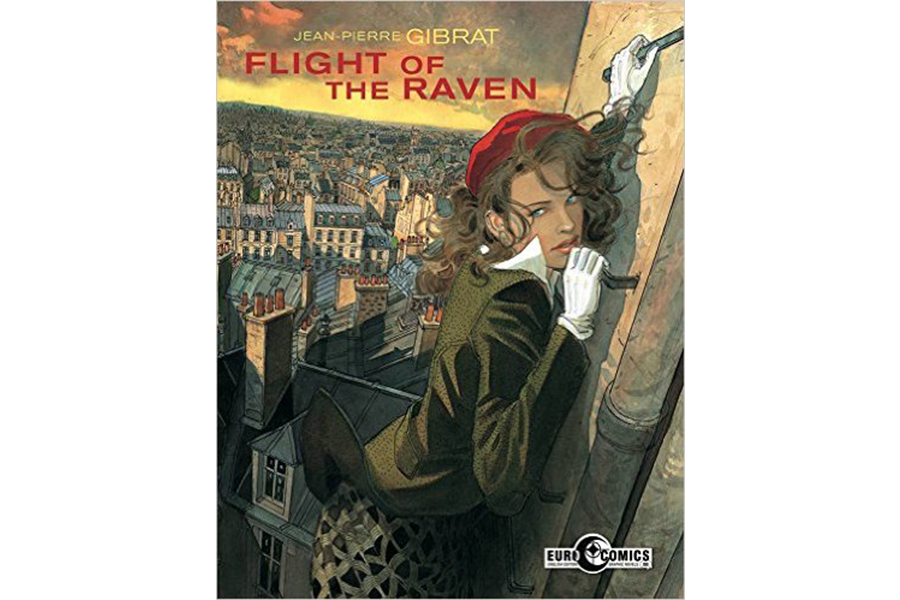'Flight of the Raven' is a captivating tale of life in occupied Paris in 1944
Loading...
It's Paris, 1944. The city is still occupied by the Nazis but news of the invasion of Normandy is giving the populace hope. Meanwhile, young resistance fighter Jeanne finds herself in jail when a cache of weapons is found in her apartment.
This is opening of Jean-Pierre Gibrat's graphic novel masterpiece Flight of the Raven.
Jeanne is soon joined in her cell by master-thief François and while it's loathe-at-first-sight she escapes with the rogue. After a breathtaking jaunt on the rooftops of Paris, the pair finds sanctuary on a barge traveling on the Seine. There Jeanne is befriended by François's friend René, his expectant wife Huguette, and their son Nicholas, all of whom live on the spacious barge. With her new friends, the young resistance fighter tries to solve the mystery of who betrayed her to the authorities while also trying to find her sister Cécile during the ever-increasing turmoil caused by the advance of the allies.
This is an intriguing suspense story that draws you a picture of life in occupied France. Jeanne, an idealist and member of a group of Communist resistance fighters learns that life in the occupied world is not all black and white. Instead, many French have to walk in both the light and dark in order to survive and to help their fellow Frenchmen. This is a story aimed at older readers, with many adult themes ,along with plenty of smoking and wine drinking, as would be expected in 1944 Paris.
But while Gibrat writes a captivating tale it is his art that makes this book one of the most memorable graphic novels of the past decade. Each page is lushly illustrated in gorgeous watercolors. From the rooftops and the streets of Paris to the natural beauty along the Seine to every café interior, and life on and inside a barge, Gibrat's art makes you feel like you're looking in a window to the living past. Meticulous detail and dramatic lighting make every panel a mini work of art. And while one could gush about his backgrounds alone, Gibrat's figures are just as captivating. From the young and beautiful Jeanne to barge-master René they all come to life with expressive faces and poses.
It's no wonder Gibrat is a revered artist in France, winning numerous awards. In 2014 he was knighted in the French Ordre des Arts et des Lettres.
Originally published in two parts in 2002 and 2005, this is a sequel series to "Le Sursis," which features Jeanne's sister Cécile. This is the first time this wonderful work has been available in English thanks to IDW's EuroComics imprint. This is a quality collection, capturing the richness of the watercolors. Besides collecting the two parts of the graphic novel in one book, there's also a section with Gibrat's pencil sketches as he developed his story and some wonderful watercolor illustrations of Jeanne in scenic Paris and bucolic French countrysides.
As a longtime comic and graphic novel fan, I'm always interested in seeing new work, especially from Europe where there are so many great artists I am less familiar with. Reading "Flight of the Raven" and being introduced to Jean-Pierre Gibrat was one such treat. This is a wonderful book for graphic novel fans but also for history buffs and art lovers. After reading this book once, you'll be drawn to it again and again for Gibrat's marvelous watercolors as they transport you back to the long-disappeared world of 1944 France.






